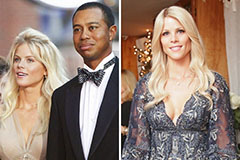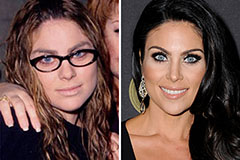Dressing well is a here practice that transcends mere clothing selection. It's about projecting your personal style while communicating confidence and taste. A carefully curated wardrobe, balanced by the appropriate accessories, can have a profound impact on how you present yourself to the world. It's about celebrating your individuality while respecting the principles of style and balance. Ultimately, dressing well is a journey of evolution, one that allows you to highlight your unique flair.
Selecting the Ideal Dress
Embarking on a quest for the perfect dress can be an exciting yet daunting task. With so many options available, it's easy to feel overwhelmed. Fear not, this guide will equip you with the essential tips and tricks to seamlessly navigate the world of dresses and find the one that speaks to your unique taste.
- To begin with identifying the occasion. Is it a formal event, a casual gathering, or something in between? The setting will heavily influence your dress choice.
- Secondly, think about your body shape. Different shapes flatter different body types.
- Finally, Try on a variety of styles and colors.
Always consider that the most important thing is to choose a dress that makes you radiate joy.
Fashion Trends in Dresses rule
This cycle, the world of dresses is brimming with bold trends. A-line silhouettes continue to be popular, often crafted from soft fabrics like chiffon and silk. A revival of vintage styles is also in full swing, with flapper waistlines making a stylish comeback.
For those seeking a more modern look, sharp dresses with striking color blocks and abstract prints are making waves. Shoes play a key role in completing these looks, with chunky heels adding an element of power.
Whether your personal style, there's a dress trend to suit every taste this season. From rustic florals to sleek silhouettes, the possibilities are truly boundless.
Dresses Through the Ages
Throughout the course of centuries, dresses have evolved dramatically, showing the cultural norms and artistic trends of each era. From the flowing gowns of ancient civilizations to the fitted silhouettes of the Victorian time, dresses have always been a representation of femininity and status.
In the 20th century, dresses adopted modernity with the coming of new fabrics like nylon and looks that were more practical. The miniskirt of the 1960s and the bohemian styles of the 1970s displayed the liberation of women.
- Modern dresses continue to evolve, showing the range of individuality.
Sustainable Dressmaking Practices
In the realm of fashion, embracing/adopting/implementing sustainable dressmaking practices has become increasingly crucial. This involves selecting/choosing/utilizing eco-friendly materials like organic cotton or recycled fabrics, minimizing textile waste through careful pattern cutting and efficient/optimized/strategic use of fabric scraps. Furthermore, supporting/patronizing/encouraging ethical labor conditions throughout the production process is paramount to achieving/realizing/attaining truly sustainable garment creation. By integrating/incorporating/embracing these principles, dressmakers can contribute to a more eco-conscious/environmentally friendly/sustainable fashion industry.
A Look At Of Wearing A Dress
Putting on a dress can be more than just a sartorial choice. Expresses a range of sensations and can impact our perception of ourselves and the world around us. Experts believe that dresses can tap into deeply intrinsic aspects of our being.
For some, a dress evokes feelings of grace, while others associate it liberating. The texture of the dress, its shade, and even its shape can contribute to these feelings.
- Moreover, cultural norms also play a significant role in shaping our view of dresses.
- In some communities, dresses are considered symbols of tradition, while in others they may be associated with more serious occasions.
In conclusion, the psychology of wearing a dress is a complex one, affected by a combination of unique and environmental factors.
 Tiffany Trump Then & Now!
Tiffany Trump Then & Now! Danny Pintauro Then & Now!
Danny Pintauro Then & Now! Elin Nordegren Then & Now!
Elin Nordegren Then & Now! Nadia Bjorlin Then & Now!
Nadia Bjorlin Then & Now! Nicholle Tom Then & Now!
Nicholle Tom Then & Now!